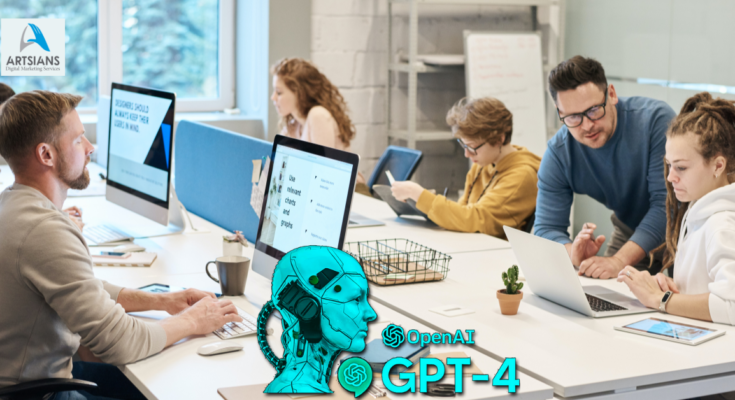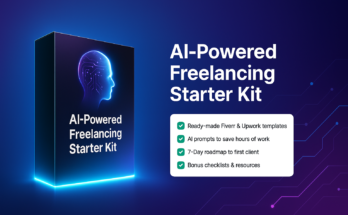In today’s fast-paced business world, companies need to keep up with the latest technologies to stay ahead of the competition. One technology that is gaining popularity among businesses is workflow automation, which involves using software to automate repetitive tasks and streamline processes. ChatGPT is an artificial intelligence (AI) platform that is helping businesses automate their workflows, saving time and increasing efficiency. In this article, we will explore how ChatGPT is being used by companies to automate their workflows, the benefits of workflow automation, and how businesses can automate their workflows using ChatGPT.
Table of Contents
- Introduction
- What is workflow automation?
- Benefits of workflow automation
- Can ChatGPT automate processes?
- How are companies using ChatGPT?
- What is ChatGPT being used for?
- How does workflow automation help a business?
- How do you automate a business workflow?
- Steps to automate a business workflow with ChatGPT
- Best practices for workflow automation
- Challenges of workflow automation
- How to overcome challenges in workflow automation
- Conclusion
- FAQs
Introduction
ChatGPT is an AI platform developed by OpenAI that uses natural language processing (NLP) to generate human-like responses to text-based inputs. It is trained on a vast corpus of text data and can understand and respond to a wide range of topics. Companies are using ChatGPT to automate their workflows by integrating it into their existing systems and applications.
What is Workflow Automation?
Workflow automation involves using software to automate repetitive tasks and streamline processes. It helps companies reduce manual errors, save time, and increase efficiency. Automation can be applied to various types of workflows, including marketing, sales, customer service, and finance.
Benefits of Workflow Automation
Workflow automation offers several benefits to businesses, including:
Increased Efficiency
Automating repetitive tasks frees up employees to focus on more important tasks, increasing their productivity and efficiency.
Reduced Errors
Manual processes are prone to errors, which can lead to costly mistakes. Workflow automation reduces the risk of errors and ensures consistency in processes.
Cost Savings
Automation reduces the need for manual labor, which can save companies money on staffing costs. It also eliminates the need for paper-based processes, saving money on printing and storage.
Improved Customer Experience
Automated workflows can help companies respond to customer inquiries faster, improving their overall experience with the brand.
Can ChatGPT Automate Processes?
Yes, ChatGPT can automate processes. It can be integrated into a company’s existing systems and applications to automate repetitive tasks and streamline workflows. ChatGPT can understand natural language inputs and generate human-like responses, making it an ideal tool for automating text-based processes such as customer service inquiries and support tickets.
How are Companies Using ChatGPT?
Companies are using ChatGPT to automate various workflows, including:
Customer Service
ChatGPT can be integrated into a company’s website or messaging platform to automate customer service inquiries. It can understand natural language inputs and provide human-like responses, improving the overall customer experience.
Marketing
ChatGPT can be used to automate marketing campaigns, such as email and social media campaigns. It can generate personalized messages based on user data and behavior, improving engagement and conversion rates.
Sales
ChatGPT can automate various sales processes, such as lead qualification and follow-up. It can analyze customer data and generate personalized messages, improving the overall sales process. ChatGPT is Helping Businesses Automate Their Workflows.
HR
ChatGPT can automate various HR processes, such as recruitment and onboarding. It can analyze resumes and job applications and generate personalized messages to candidates, improving the overall hiring process.
What is ChatGPT Being Used For?
ChatGPT is being used for various tasks, including:
How Does Workflow Automation Help a Business?
Workflow automation offers several benefits to businesses, including:
Time Savings
Automating repetitive tasks can save companies a significant amount of time. This time can then be used to focus on more important tasks, such as strategic planning and business growth.
Increased Accuracy
Automated workflows are less prone to errors than manual processes, resulting in increased accuracy and better data quality.
Better Collaboration
Automated workflows can improve collaboration between different teams and departments, as all members have access to the same information and processes.
Improved Customer Satisfaction
By automating customer service inquiries, companies can respond to customer needs faster, leading to improved customer satisfaction.
How Do You Automate a Business Workflow?
To automate a business workflow with ChatGPT, follow these steps:
1. Identify the Workflow
Identify the workflow you want to automate, including the tasks involved and the inputs and outputs required.
2. Determine the Inputs and Outputs
Determine the inputs and outputs required for the workflow, including the data and information needed to complete each task.
3. Train ChatGPT
Train ChatGPT on the inputs and outputs required for the workflow. This involves providing ChatGPT with examples of the inputs and outputs and training it to generate the desired outputs based on the inputs.
4. Test ChatGPT
Test ChatGPT to ensure it is generating the desired outputs based on the inputs. Make any necessary adjustments to the training data and parameters. ChatGPT is Helping Businesses Automate Their Workflows.
5. Integrate ChatGPT
Integrate ChatGPT into the existing system or application used for the workflow. This involves setting up the necessary APIs and endpoints for ChatGPT to communicate with the system or application.
6. Monitor and Improve
Monitor the automated workflow to ensure it is functioning as intended. Make any necessary improvements or adjustments to the training data and parameters to improve the accuracy and efficiency of the workflow.
Best Practices for Workflow Automation
When automating workflows with ChatGPT, it’s important to follow these best practices:
Start Small
Start by automating a small portion of the workflow to ensure it’s functioning as intended before scaling up.
Involve Stakeholders
Involve all stakeholders in the workflow automation process, including employees and management, to ensure everyone is on board and understands the benefits and potential challenges.
Set Realistic Expectations
Set realistic expectations for the workflow automation process, including the time and resources required and the potential benefits and challenges.
Monitor and Measure
Monitor and measure the performance of the automated workflow to identify areas for improvement and optimization.
Challenges of Workflow Automation
Workflow automation can also present some challenges, including:
Complexity
Automating workflows can be complex, requiring technical expertise and specialized knowledge.
Integration
Integrating ChatGPT into existing systems and applications can be challenging and require significant development work.
Maintenance
Maintaining the automated workflow and keeping it up-to-date can require ongoing resources and support.
How to Overcome Challenges in Workflow Automation
To overcome challenges in workflow automation, it’s important to:
Invest in Training and Support
Invest in training and support to ensure employees have the necessary skills and knowledge to use ChatGPT effectively.
ChatGPT is Helping Businesses Automate Their Workflows
Work with Experts
Work with experts in workflow automation and AI to ensure the process is set up correctly and optimized for efficiency and accuracy.
Continuously Monitor and Improve
Continuously monitor and improve the automated workflow to ensure it’s functioning as intended and identify areas for optimization and improvement.
Conclusion
ChatGPT is a valuable tool for businesses looking to automate their workflows and streamline their processes. By following best practices, investing in training and support, and continuously monitoring and improving the automated workflow, companies can reap the benefits of this technology and stay ahead of the competition. With ChatGPT’s capabilities in natural language processing and machine learning, it has the potential to transform the way businesses operate and help them achieve their goals more efficiently and effectively.
FAQs
- Can ChatGPT automate any business workflow?
ChatGPT can automate many business workflows, but it’s important to identify the specific tasks and inputs required for each workflow before determining if it’s a good fit for automation.
- How are companies using ChatGPT for workflow automation?
Companies are using ChatGPT for a variety of tasks, including customer service inquiries, data analysis, and document processing.
- What benefits does workflow automation offer to businesses?
Workflow automation offers benefits such as time savings, increased accuracy, better collaboration, and improved customer satisfaction.
- What are the challenges of workflow automation?
Workflow automation can be complex, require integration with existing systems, and require ongoing maintenance and support.
- How can businesses overcome challenges in workflow automation?
Businesses can invest in training and support, work with experts in workflow automation and AI, and continuously monitor and improve the automated workflow to overcome challenges.



